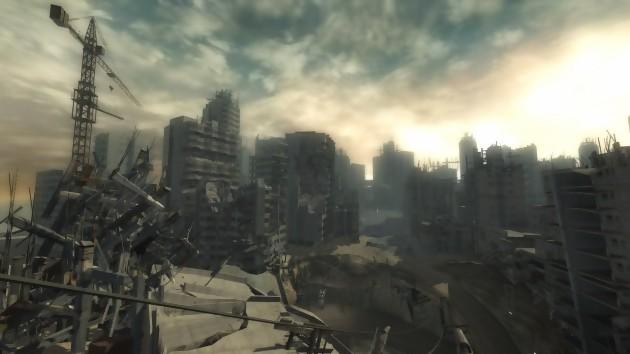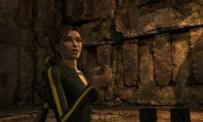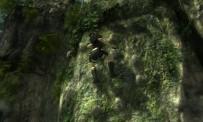Test carried out from the Xbox 360 and PlayStation 3 versions
 Taking advantage of the consecutive improvements of its two choice predecessors having succeeded in the feat of dusting off the license, Tomb Raider Underworld therefore arrives as the ultimate opus, answering all the questions left unanswered and benefiting from the know-how now acquired from Crystal Dynamics in building an immersive and well-tuned gaming experience. Taking as a narrative basis Lara's still active search for a lead allowing her to finally see her mother again, who we learn has gone to the mythical land of Avalon, Tomb Raider Underworld focuses on primitive Norse mythology, rarely seen in the video game world. A precise thematic limitation which does not prevent Lara from going from Thailand to the Arctic via South America, in a perspective dear to the series, namely travel and discovery. This opus is therefore based on solid foundations that still work just as well, combining the wonder of a change of scenery with the excitement of mystery in a childlike fascination of skilfully rendered adventure films. A contemplative pleasure that suffers from an evil that is just as widespread in the world of action cinema, namely a relatively badly put together scenario, which obviously includes its share of revelations and conclusions worthy of interest, but which advances in a totally synthetic, letting the gameplay take the foreground with empty stagings and damaging ellipses. We can really regret that the title as a whole does not resemble the intelligent sequence of the first "missions" as varied as they are fluid in their progress. Because if the frame lets itself be followed, it is more as a binder than for its quality of writing. Admittedly, this is not necessarily what one asks of a Tomb Raider, but when certain defects stand out in an obvious way, it is always saving to hang on to a good story.
Taking advantage of the consecutive improvements of its two choice predecessors having succeeded in the feat of dusting off the license, Tomb Raider Underworld therefore arrives as the ultimate opus, answering all the questions left unanswered and benefiting from the know-how now acquired from Crystal Dynamics in building an immersive and well-tuned gaming experience. Taking as a narrative basis Lara's still active search for a lead allowing her to finally see her mother again, who we learn has gone to the mythical land of Avalon, Tomb Raider Underworld focuses on primitive Norse mythology, rarely seen in the video game world. A precise thematic limitation which does not prevent Lara from going from Thailand to the Arctic via South America, in a perspective dear to the series, namely travel and discovery. This opus is therefore based on solid foundations that still work just as well, combining the wonder of a change of scenery with the excitement of mystery in a childlike fascination of skilfully rendered adventure films. A contemplative pleasure that suffers from an evil that is just as widespread in the world of action cinema, namely a relatively badly put together scenario, which obviously includes its share of revelations and conclusions worthy of interest, but which advances in a totally synthetic, letting the gameplay take the foreground with empty stagings and damaging ellipses. We can really regret that the title as a whole does not resemble the intelligent sequence of the first "missions" as varied as they are fluid in their progress. Because if the frame lets itself be followed, it is more as a binder than for its quality of writing. Admittedly, this is not necessarily what one asks of a Tomb Raider, but when certain defects stand out in an obvious way, it is always saving to hang on to a good story.
Annoying gameplay
 Much more flexible than during her first adventures, where the invisible pixel could prevent you from operating a lever or successfully jumping, Lara underwent radical evolutions in Tomb Raider Anniversary and Tomb Raider Legend, moving towards a kind of automation pleasant, which prevents too much frustration with the gameplay, and avoids tarnishing the progress in the adventure. Nevertheless, while balance was required in Tomb Raider Legend in particular, this somewhat assisted gameplay perfectly complementing the reduction in the purely research aspect, it loses its luster in Tomb Raider Underworld, as the emphasis is now put on solving puzzles. Returning to his first love, this episode is indeed more of an adventure game à la Broken Sword (Les Chevaliers de Baphomet) boosted with adrenaline than an action game strictly speaking. Embedded in a particularly skilful way in the magnificent decorations that the game conceals, the tools necessary for your progress, whether they are the practicable walls, the elements to be placed precisely, in summary the visual clues of all kinds, require long minutes of attention. . Sometimes only a slightly different shade, a cornice that is too perfect to be natural will attract your discerning eye, which does not benefit from any particular help. This demand for concentrated observation also highlights an extremely inventive level-design, as it turns out to be tortured and convoluted in its workings. This surprisingly controlled bias is a joy to experiment to the point of finding yourself thinking about the best way - not necessarily the most logical - to open a sealed door or access an out of reach column. Immersion is therefore all the easier, to the point of being sometimes enthusiastic by the simple discovery of a new field of reflection with millennial dust.
Much more flexible than during her first adventures, where the invisible pixel could prevent you from operating a lever or successfully jumping, Lara underwent radical evolutions in Tomb Raider Anniversary and Tomb Raider Legend, moving towards a kind of automation pleasant, which prevents too much frustration with the gameplay, and avoids tarnishing the progress in the adventure. Nevertheless, while balance was required in Tomb Raider Legend in particular, this somewhat assisted gameplay perfectly complementing the reduction in the purely research aspect, it loses its luster in Tomb Raider Underworld, as the emphasis is now put on solving puzzles. Returning to his first love, this episode is indeed more of an adventure game à la Broken Sword (Les Chevaliers de Baphomet) boosted with adrenaline than an action game strictly speaking. Embedded in a particularly skilful way in the magnificent decorations that the game conceals, the tools necessary for your progress, whether they are the practicable walls, the elements to be placed precisely, in summary the visual clues of all kinds, require long minutes of attention. . Sometimes only a slightly different shade, a cornice that is too perfect to be natural will attract your discerning eye, which does not benefit from any particular help. This demand for concentrated observation also highlights an extremely inventive level-design, as it turns out to be tortured and convoluted in its workings. This surprisingly controlled bias is a joy to experiment to the point of finding yourself thinking about the best way - not necessarily the most logical - to open a sealed door or access an out of reach column. Immersion is therefore all the easier, to the point of being sometimes enthusiastic by the simple discovery of a new field of reflection with millennial dust.
However, while balance was essential in Tomb Raider Legend in particular, this slightly assisted gameplay perfectly complementing the reduction of the purely research aspect, it loses its luster in Tomb Raider Underworld.
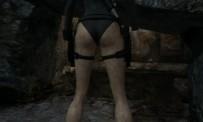 The problem then arises is that of the mix between this clearly exploration-oriented approach, and a gameplay whose evolution does not really suit this return to the past. Still benefiting from new abilities in this episode, the beautiful archaeologist/adventurer/acrobat loses in freedom what she gains in simplicity. From now on, melee clashes can be summed up in a very sober kick, and certain special actions during gunfights have given way to a principle dear to Max Payne: the slowing down of the action once the adrenaline level is sufficient raised. During these phases, you will have to align your reticle with a target present on the enemy in front of you, to put him down with a single bullet. An idea that quickly goes around in circles, the fault of an always similar staging during these passages, giving them a redundancy pushing the player to no longer really use them. To put it bluntly, the fights are obviously sluggish, never managing to become a "real" part of the gameplay. In the same line, the management of jumps is now taken care of most of the time, and it is rare to miss a flight if you take good care, however, to observe Lara's position, in order to know if she will choose to cling or not to a wall. Admittedly, it is very possible to spend several minutes on a passage that is oddly largely less attended, but this kind of situation arises in the majority of cases after one of the many madnesses of a poorly managed camera. Really handicapping the advance in the software, masking too many times the landing points of the beauty, and very often panicking as soon as one is close to an obstacle, the point of view is in one feel the only real enemy of Tomb Raider with its imbalance. Because how to manage to arouse a real constant interest when the exploration totally takes precedence over the pure pleasure of play? In the case of an open game, the freedom of movement compensates for this boredom, but here, in a certain linearity, the weariness quickly sets in and the impression of playing a sort of puzzle-game tinged with action getting bigger and bigger. Of course, huge levels like the one in the prologue or even in the enclosure of the Mayan temples, which have to be explored from top to bottom, remove a large part of this drawback, but those remaining, being limited to a central mechanism barely surrounded by a few unfortunate screens make this impression of flatness even more significant. If certain motorcycle phases show a sudden exhilarating dynamism, in particular the dizzying descent of the Valaskjálf ledges, they are only sporadic and do not add the real notion of adventure that one expects from a title that lacks of breath, but no resources, especially graphics.
The problem then arises is that of the mix between this clearly exploration-oriented approach, and a gameplay whose evolution does not really suit this return to the past. Still benefiting from new abilities in this episode, the beautiful archaeologist/adventurer/acrobat loses in freedom what she gains in simplicity. From now on, melee clashes can be summed up in a very sober kick, and certain special actions during gunfights have given way to a principle dear to Max Payne: the slowing down of the action once the adrenaline level is sufficient raised. During these phases, you will have to align your reticle with a target present on the enemy in front of you, to put him down with a single bullet. An idea that quickly goes around in circles, the fault of an always similar staging during these passages, giving them a redundancy pushing the player to no longer really use them. To put it bluntly, the fights are obviously sluggish, never managing to become a "real" part of the gameplay. In the same line, the management of jumps is now taken care of most of the time, and it is rare to miss a flight if you take good care, however, to observe Lara's position, in order to know if she will choose to cling or not to a wall. Admittedly, it is very possible to spend several minutes on a passage that is oddly largely less attended, but this kind of situation arises in the majority of cases after one of the many madnesses of a poorly managed camera. Really handicapping the advance in the software, masking too many times the landing points of the beauty, and very often panicking as soon as one is close to an obstacle, the point of view is in one feel the only real enemy of Tomb Raider with its imbalance. Because how to manage to arouse a real constant interest when the exploration totally takes precedence over the pure pleasure of play? In the case of an open game, the freedom of movement compensates for this boredom, but here, in a certain linearity, the weariness quickly sets in and the impression of playing a sort of puzzle-game tinged with action getting bigger and bigger. Of course, huge levels like the one in the prologue or even in the enclosure of the Mayan temples, which have to be explored from top to bottom, remove a large part of this drawback, but those remaining, being limited to a central mechanism barely surrounded by a few unfortunate screens make this impression of flatness even more significant. If certain motorcycle phases show a sudden exhilarating dynamism, in particular the dizzying descent of the Valaskjálf ledges, they are only sporadic and do not add the real notion of adventure that one expects from a title that lacks of breath, but no resources, especially graphics.
Indiana Croft
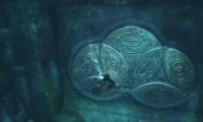 Showing an absolutely fabulous work on the atmosphere, Tomb Raider Underworld is constantly a call to contemplation. Nothing seems inconsistent in the construction of the levels, as much from an architectural, historical or technical point of view. The title benefits from an artistic direction of a very high quality, and we often find ourselves studying the different rooms or environments crossed by simple admiration or curiosity. Tomb Raider Underworld manages to make its world a truly sensitive experience, in the sense that one can feel the dilapidation of the places, the abandonment that occupies them and feel the urge to explore the mystery they conceal. In this, the Crystal Dynamics software manages to reassure, to prove that we can let ourselves be carried away by an atmosphere that almost makes us forget the wanderings of the gameplay. Because the strength of Tomb Raider Underworld lies here, in its ability to make us often forget that we are in front of a video game, to give us the impression of living a palpable adventure, to participate in a mystical-archaeological quest worthy by Indiana Jones. It is indeed a shame that the overall imbalance, the lack of ambition and the unfinished side come to weigh down the very good times spent on the game. Because between the collision bugs, the disappearance of textures and the display problems, the software does not really help us to put things into perspective. But in the end, what remains of the adventure once completed is the feeling of having just experienced a short immersive story with a finely crafted soundtrack, and this with unfeigned pleasure. The problem with sentiment is that it does not hide the reality of things.
Showing an absolutely fabulous work on the atmosphere, Tomb Raider Underworld is constantly a call to contemplation. Nothing seems inconsistent in the construction of the levels, as much from an architectural, historical or technical point of view. The title benefits from an artistic direction of a very high quality, and we often find ourselves studying the different rooms or environments crossed by simple admiration or curiosity. Tomb Raider Underworld manages to make its world a truly sensitive experience, in the sense that one can feel the dilapidation of the places, the abandonment that occupies them and feel the urge to explore the mystery they conceal. In this, the Crystal Dynamics software manages to reassure, to prove that we can let ourselves be carried away by an atmosphere that almost makes us forget the wanderings of the gameplay. Because the strength of Tomb Raider Underworld lies here, in its ability to make us often forget that we are in front of a video game, to give us the impression of living a palpable adventure, to participate in a mystical-archaeological quest worthy by Indiana Jones. It is indeed a shame that the overall imbalance, the lack of ambition and the unfinished side come to weigh down the very good times spent on the game. Because between the collision bugs, the disappearance of textures and the display problems, the software does not really help us to put things into perspective. But in the end, what remains of the adventure once completed is the feeling of having just experienced a short immersive story with a finely crafted soundtrack, and this with unfeigned pleasure. The problem with sentiment is that it does not hide the reality of things.
